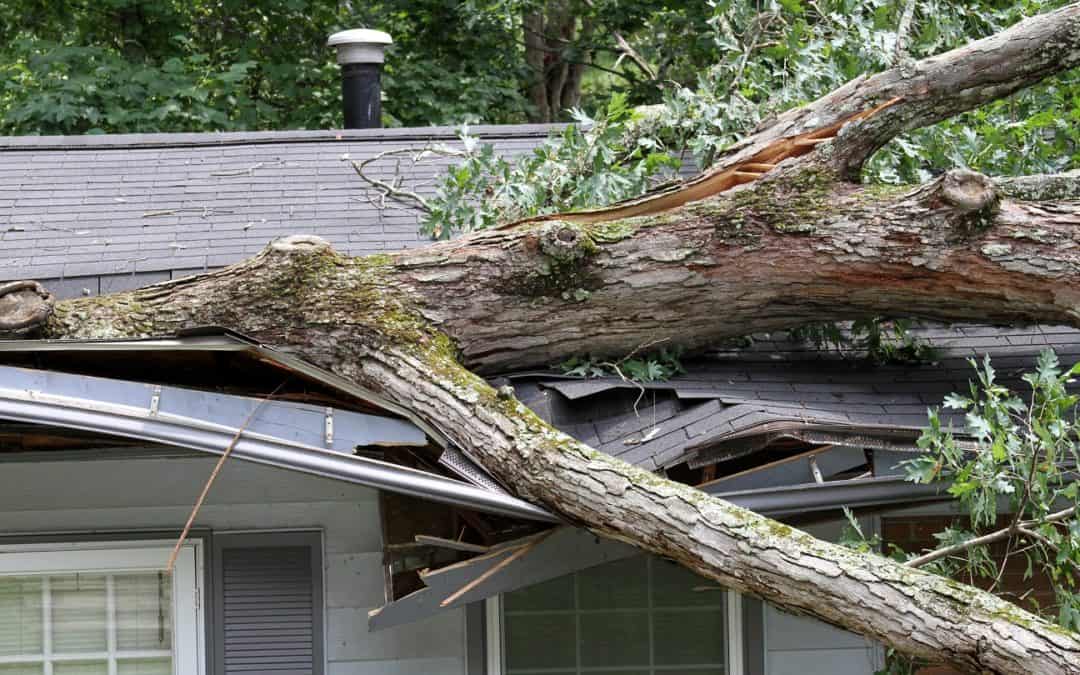A storm is often defined as a disturbance in the atmosphere, characterized by strong winds, rain, thunder, and lightning. In most cases, storms are violent and cause a lot of damage once they occur. This is the point in time when insurance for storm damage becomes necessary for you.
Insurance coverage aims to return your property to its previous condition before the storm took place. An insurance provider will compensate you for the damage, but you must first submit a claim.
Has a recent storm damaged your roof or gutter? Are you wondering how to file the claim? Put your worries to rest; this article will guide you by giving a step-by-step guide.

Consider taking the following steps:
- Review Your Insurance Policy
Insurance policies tend to differ; not all home insurance covers compensation for storm damage. This is why you need to review your insurance policy to see if you qualify for compensation. Your insurance may cover storm damage but won’t necessarily pay for some specific damage the storm caused. What does this mean?
Suppose your siding has been damaged after a storm. If your policy only covers roof damage, you won’t be eligible for compensation and may have to pay the repair costs out of your own pocket. Consider hiring an expert in insurance claims for storm damage. They’ll help you assess your type of damage and verify if your policy caters to it. In addition, you may search online or use any other source at your disposal to see some of the services this expert can offer you.
Once you confirm your eligibility, familiarize yourself with the policy’s procedure for filing claims.
- Inform Your Insurance Provider
Informing your insurance provider of the given incident is crucial. You want them to make adequate preparations on their end so that they can compensate you accordingly. Also, most insurance policies have a timeframe within which you must report the storm damage. If you fail to do so, the provider won’t compensate you even if you qualify.
Besides complying with your policy, informing your insurance provider as soon as the damage happens speeds up the compensation process. The longer you wait to notify them, the longer it’ll take to get your compensation. After all, you have to repair your roof as soon as possible to protect your house and yourself from further damage.
- Gathering Evidence
Part of the claim filing process involves providing evidence. You have to prove beyond reasonable doubt that the storm caused the damage to your home. How do you do this?
Take out your mobile phone or camera and take pictures of the damage. It’s advisable to get up close as possible. Suppose a tree has fallen on your roof and caused it to cave in. Take a picture of the point of contact between your roof and the tree.
It’s good to point out that storm damage can extend to your home’s interior. A caved-in roof can damage your furniture, TV, etc. In this case, a video will suffice, showing the damage.
As a homeowner, you might lack the expertise in inspecting for damage, making you miss out on some aspects. It’d help to hire an adjuster to conduct the inspection and gather relevant evidence for your claim. Alternatively, your chosen water damage restoration company can assist you with evidence collection. These two experts will inspect your property with a professional eye, eliminating the possibility of missed-out evidence.
- Avail The Needed Documents
Your evidence-collecting shouldn’t end there. You must avail the same to your insurance provider. In addition to the evidence, most insurance providers will request more documentation to clarify the process. Be sure to avail the necessary documents, being keen on the stipulated dates. If you’re asked to provide something within a day, do so immediately. If you don’t, the insurance provider will claim you breached the conditions of the agreement. This won’t look good in your records as you undertake the process.
As you comply regarding the documents, ensure you keep records indicating the time frame and date you availed the documents. Some insurance providers could claim you didn’t provide certain data even if you did, with the aim of not compensating you. However, your records will prove otherwise, enabling you to take full advantage of your insurance cover.
What Happens Next
Once you’ve submitted your evidence and other documents, and complied with the claim-filing process, your insurance provider will likely send an adjuster to your premises. The adjuster will inspect your property to confirm the storm damage. Once the adjuster affirms your claim, they’ll appraise the damage to advise the insurance provider of the amount you are eligible for. After which, your insurance provider will compensate you accordingly, enabling you to cater to the damage in your home.
Conclusion
The discussion above shows that filing a storm damage insurance claim isn’t challenging. With the right guidance, you’ll have an easy time. This article has divulged a step-by-step guide to help you with the process. Consider implementing it to the letter to get the compensation you deserve from your insurance provider.

Recent Comments